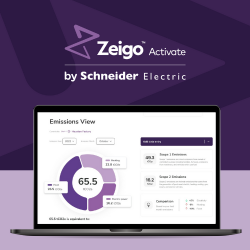Hitting it off: The increasing need for effective integration within additive manufacturing
For many years, the additive manufacturing (AM) ecosystem has addressed important ongoing needs: reducing the cost of 3D printing, expanding the selection of AM ready materials, improving skills and training, and addressing design needs. However, as more and more industrial applications came forward, additional needs have come to the fore.
This includes, for example, those software solutions that address secured repeatability, consistency across time and location, and intellectual property protection. Aside from repeatability, which is pervasive, industrial use of AM creates many other needs: automation, post processing control, and workflow solutions. However, these needs raise a common requirement that stems from how fragmented this ecosystem is: the need for integration and playing well with others which is becoming a key emerging need. Without seamless, easy integration, automation will be clunky and potentially impossible, workflows will be chopped up and manual, and the mind share and attention of highly skilled expensive personnel will be needed next to each and every 3D printer.
If COVID-19 has taught us anything, it is that this process needs to be automated, able to run remotely, and with as minimal disruption as possible to normal company operations. Integration is essential for that. Moreover, simple integration – including easy-to-use Application Programming Interfaces (APIs) – have to be addressed by all ecosystem players; there is no magic glue that can integrate everything with everything. At least not yet.
Open the APIs
So what are these APIs and why are they crucial? API is a software intermediary that allows one software application to communicate with another.
A good example would be your phone’s photo app; when you share a photo in another application, such as WhatsApp, the photo app will use an API to communicate with the WhatsApp app. Imagine your user experience if there were no APIs on your applications: you would have to manually move information from one app to the other or use files to save it in between apps. Cumbersome and inefficient, but not unlike any workflow where the vendors do not provide sufficient APIs to carry it out seamlessly.
In AM, where the workflow can be quite complicated, it behooves all the ecosystem players – from printer manufacturers through software providers to post processing equipment – to provide a sufficient set of APIs that allow seamless integration and automation.
We, at LEO Lane, pride ourselves on the richness of our APIs and the ease of integrating with us and we are fortunate to have like-minded partners. Recently several 3D printer manufacturers have indicated they are working on releasing their APIs to partners to enable just such integrations – an important step in the right direction.
Ultimately, the complexity of the total AM process, the 3D printing itself, and achieving a repeatable manufacturing technology, necessitate seamless integration and secured knowledge sharing in the end-to-end process. This latter requirement is critical and something I will address separately next time round.
***
Lee-Bath Nelson is Co-Founder and VP Business at LEO Lane, an Israel-based business which, via its cloud-based SaaS solution, helps companies to safely use digital inventories and protect their IP by enforcing a consistent, repeatable, secure and trackable digital supply chain for additive manufacturing. She can be reached at info@leolane.com.
Comments (0)
This post does not have any comments. Be the first to leave a comment below.
Featured Product

